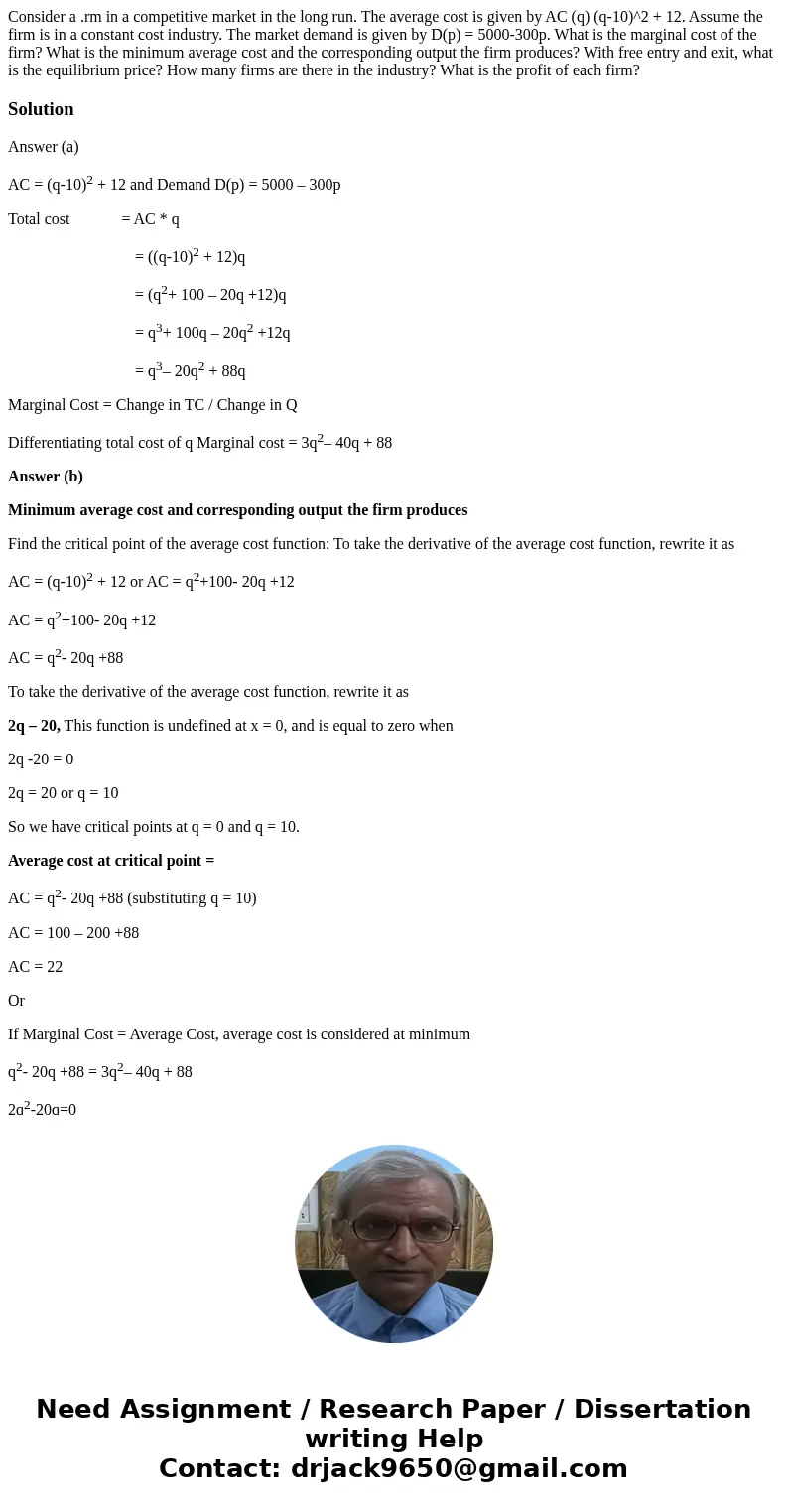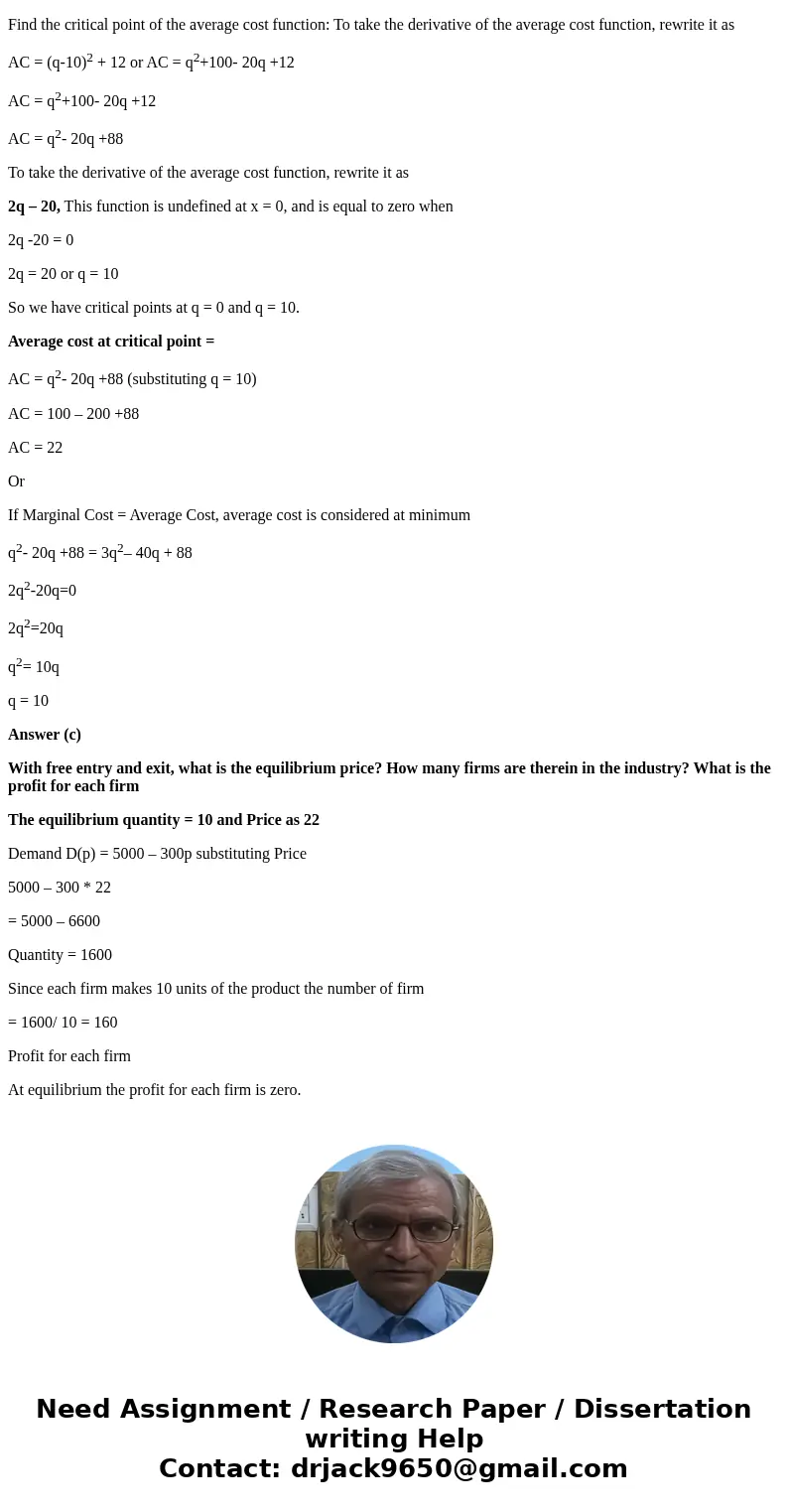Consider a rm in a competitive market in the long run The av
Solution
Answer (a)
AC = (q-10)2 + 12 and Demand D(p) = 5000 – 300p
Total cost = AC * q
= ((q-10)2 + 12)q
= (q2+ 100 – 20q +12)q
= q3+ 100q – 20q2 +12q
= q3– 20q2 + 88q
Marginal Cost = Change in TC / Change in Q
Differentiating total cost of q Marginal cost = 3q2– 40q + 88
Answer (b)
Minimum average cost and corresponding output the firm produces
Find the critical point of the average cost function: To take the derivative of the average cost function, rewrite it as
AC = (q-10)2 + 12 or AC = q2+100- 20q +12
AC = q2+100- 20q +12
AC = q2- 20q +88
To take the derivative of the average cost function, rewrite it as
2q – 20, This function is undefined at x = 0, and is equal to zero when
2q -20 = 0
2q = 20 or q = 10
So we have critical points at q = 0 and q = 10.
Average cost at critical point =
AC = q2- 20q +88 (substituting q = 10)
AC = 100 – 200 +88
AC = 22
Or
If Marginal Cost = Average Cost, average cost is considered at minimum
q2- 20q +88 = 3q2– 40q + 88
2q2-20q=0
2q2=20q
q2= 10q
q = 10
Answer (c)
With free entry and exit, what is the equilibrium price? How many firms are therein in the industry? What is the profit for each firm
The equilibrium quantity = 10 and Price as 22
Demand D(p) = 5000 – 300p substituting Price
5000 – 300 * 22
= 5000 – 6600
Quantity = 1600
Since each firm makes 10 units of the product the number of firm
= 1600/ 10 = 160
Profit for each firm
At equilibrium the profit for each firm is zero.


 Homework Sourse
Homework Sourse